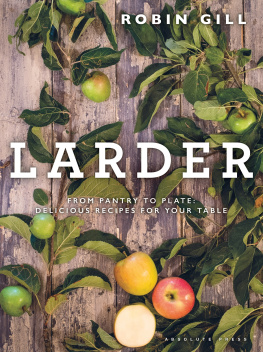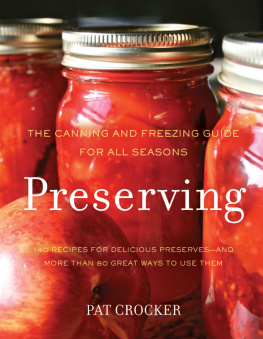
Mrs. Wheelbarrows
Practical Pantry
RECIPES AND TECHNIQUES
FOR YEAR-ROUND
PRESERVING
Cathy Barrow
PHOTOGRAPHY BY
Christopher Hirsheimer and Melissa Hamilton



Copyright 2014 by Cathy Barrow
Photographs copyright 2014 by Christopher Hirsheimer
All rights reserved
First Edition
For information about permission to reproduce selections from this book, write to Permissions, W. W. Norton & Company, Inc., 500 Fifth Avenue, New York, NY 10110
For information about special discounts for bulk purchases, please contact W. W. Norton Special Sales at specialsales@wwnorton.com or 800-233-4830
Book design by BTDnyc
Production manager: Devon Zahn
The Library of Congress has cataloged the printed edition as follows:
Barrow, Cathy.
Mrs. Wheelbarrows practical pantry : recipes and techniques for year-round preserving / Cathy Barrow ;
photographs by Christopher Hirsheimer and Melissa Hamilton. First edition.
pages cm
Includes bibliographical references and index.
ISBN 978-0-393-24073-3 (hardcover)
1. Canning and preserving. I. Title.
TX601.B325 2014
641.4'2dc23
2014017291
ISBN 978-0-393-24586-8 (e-book)
W. W. Norton & Company, Inc., 500 Fifth Avenue, New York, N.Y. 10110
www.wwnorton.com
W. W. Norton & Company Ltd., Castle House, 75/76 Wells Street, London W1T 3QT
FOR DENNIS,
without whom there would be no Mrs. Wheelbarrow


Contents
Please bookmark your page before following links.
THE BASICS OF WATER-BATH CANNING:
ANSWERING THE SIREN CALL OF SEASONAL ABUNDANCE


Assorted fresh chiles
To make the most of a preserving habit, have a plan for what is preserved.
I ts 8:30 in the morning and I am reluctantly heading to the basement to get on the treadmill. Because I live in Washington, DC, I tune the television to a wonky news show hoping it will distract me long enough to get through this exercise routine. Instead, my eye is drawn to the shelves along two of the basement walls. Sharing space with large cooking vessels are hundreds of jars filled with edible treasures. A grocery store of my own making, evidence of weekends spent in the kitchen. This is my practical pantry.
Ive canned since I could stand on a stool next to the stove, first with my great-grandmother, and later with my mother. We made just a few things, fruit jams, pickled peaches, and pepper jelly. My mothers mango chutney was my first food obsession, and I can still recall the year I started my own home preserving habit with that treat, putting a few jars away for myself.
So, the idea of canning wasnt foreign when I read Animal, Vegetable, Miracle , Barbara Kingsolvers book chronicling her familys efforts to live locally. We bandy that word around, local, and I know many people who make every effort to shop at farmers markets all summer, picking up fresh tomatoes and corn straight from the growers. They stop for peaches at an orchard and buy apples and cider on fall weekend road trips. But in the winter, when the choices at the grocery store are from Chile and Mexico, they put all good intentions aside in favor of convenience. Until Kingsolvers book, I hadnt drawn the connection between home canning and local eating. The idea that I could put up food for the winter was different from the idea of canning for fun, as a kitchen hobby. This was planned, organized, thoughtful.
I began to shop for fresh produce at the farmers markets popping up around DC. My husband, Dennis, and I would have a Sunday morning date, walk the dog around the market, and enjoy coffee outside. I purchased what I could, learned the seasonal flow, took note of what to expect in different months: the early onions of April and the wine grapes of October. I became aware of which farmers grew which foods, who had eggs, who had tastier turkey, better greens, foraged mushrooms. I became acquainted with the farmers who displayed their products with love. The flavor of those market-fresh foods was a revelation, and not the only one I had.
Plastic. Waste. We had been overtaken by packaging. It was humbling to see the pile of recycling that left the house every week. We were surprised at the number of cans (beans and tomatoes), jars (jams, mustards, and sauces), and plastic quart and pint containers (cottage cheese, yogurt, soup, salads) we used. Slowly we began to turn away from the giant plastic clamshells filled with produce at the grocery store. We began to make buying decisions based on packaging.
Then another revelation. I began to read labels and notice salt content, high fructose corn syrup and palm oil. I will admit that for the longest time, I was quite unaware not only of what I was putting in my body, but also of how those decisions factored in to all that concerned me environmentally. Michael Pollan, Temple Grandin, Barry Estabrook. Manufactured food, GMOs, feedlots, changing weather patterns, animal waste poisoning streams, pesticides on berries, carbon footprints, pink slime, E. coli. There were many eloquent writers telling terrible stories, and now I was paying attention.
And then there were the stories chronicling the demise of the American small farmer. I grew up in the Midwest, surrounded by waving fields of grain, and the thought of families unable to continue their lifes workwell, it all hit home. I woke up. After reading Kingsolvers book, I remembered my childhood of canning again, and somehow an idea for a new way of living fell into place.
I could start canning, supplementing what I remembered with classic and new cookbooks, asking people who canned to tell me what they knew. On Saturdays, at my farmers market, I chatted up Susanne Behling, the energetic and razor-sharp orchardist at West Virginias Nob Hill Farm. She and I talked about fruit varieties, her bee population, how rain would thin the taste of berries. We waited patiently for alternate Augusts, for the Mirabelle plums that bear fruit only every other year. We shared information about pectins and how to recognize a properly set jam.
Because Suzanne is a jam maker, she grows varieties of fruit particularly good for preserving, with sensational flavors, all harvested with great care. I felt compelled to experiment with each new variety, making jams, sauces, and chutneys; with some, because their flavors were so spectacular, I simply canned the fruit in syrup. Preserving books became my nightstand reading, and I cooked through each one as I learned my way.
That first year of preserving was reasonable, but the second and third years were out of control. I loved the act of canning, the rhythm, the quiet time, the slow stirring, the satisfying pings indicating the jars were safe for storage, but Dennis and I couldnt possibly consume all that food. Holiday giving got a lot easier, sure, but even gifting jars to neighbors, the UPS driver, and every farmer at the market didnt put a dent in my inventory.
Next page
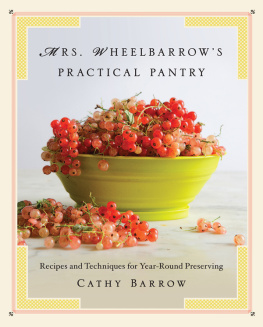
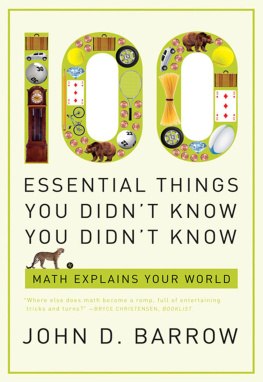


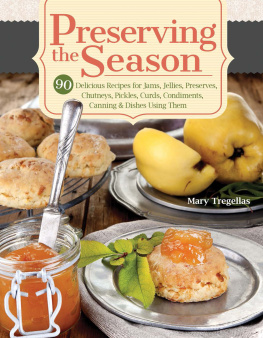
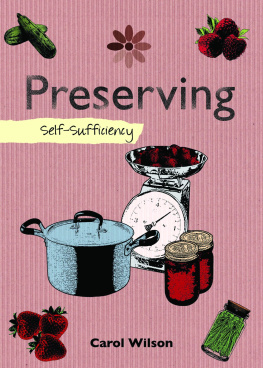
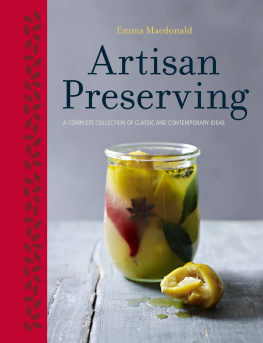

![Better Homes - Better homes and gardens you can can: [a guide to canning, preserving, and pickling]](/uploads/posts/book/188232/thumbs/better-homes-better-homes-and-gardens-you-can.jpg)

